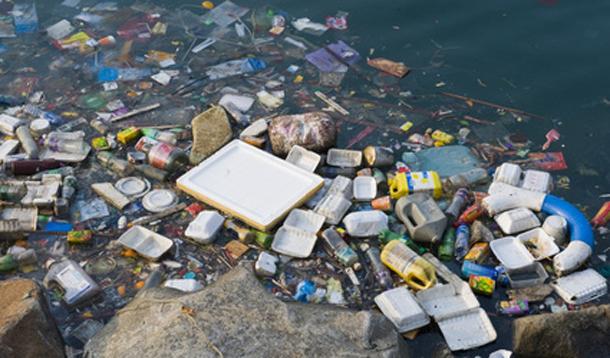
I've written before about my love for TED Talks. They are thought-provoking, educational, and give us free access to some of the smartest minds in the world. It's a virtual library of some of the most fascinating and intelligent people speaking about a variety of subjects (here are 12 environmental TED talks that will make you think). This past weekend, I came across one I had not seen before by Boyan Slat, a 20-year-old who is on a mission to clean up our oceans.
Did you know that the Pacific Ocean contains so much garbage it is considered to be the world's largest landfill? It is said that the amount of garbage in the Pacific can fit a surface as large as the state of Texas. That is obviously not a good thing. There are five patches of concentrated garbage in the oceans, called gyres:

Swirling around in those gyres are plastics of every kind—bags, bottles, toys, plastic car parts—pretty much any kind of non-biodegradeable trash people throw into the ocean. So if the trash is just sitting in the ocean swirling around, what is the big deal? It's a huge deal because it causes marine life to suffer and there are human health, economic and ecological effects.
Slat recognized this problem and came up with a genius plan. Instead of nets, which had been proposed by others in the past, but proved to not be a a great option, his team creates solid floating barriers, making entanglement of wildlife impossible.The ocean current flows underneath the barriers and the lighter-than-water plastic collects in front of the floating barrier.
Take a look at this video for the full explanation of how the barriers work:
To make his plan come to life, Slat started The Ocean Cleanup. After his TED Talk, his crowdsourcing campaign to help fund the Ocean Cleanup went viral and as a result, he has raised over 2 million dollars. The campaign ended this month and all funds will be used for work involved in the project such as research and development and the building, placement, and maintenance of the barriers.
So what can you do to help clean up the oceans? The first is the most obvious...put trash where it belongs, in the trash or recycle bin. Second, you can help fund The Ocean Cleanup project by donating.
For more info, visit the Ocean Cleanup Facebook page and The Ocean Cleanup Website.
Here's why you should always choose reusable bags over plastic bags (plastic bags are a huge part of the plastic problem in the ocean) and here is a unique way to recycle and upcycle things you would normally throw in the trash.